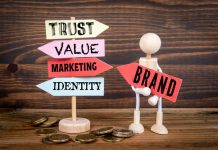The shift toward sustainability is more than a trend—it’s a necessary evolution for businesses seeking long-term success and responsibility. Preparing your organization for a sustainable business transformation can seem daunting but breaking it down into manageable steps makes it achievable. Here are seven essential steps to guide your journey.
How to prepare your organization for sustainable transformation in 7 ways
1. Develop a Clear Vision and Strategy
The first step in any transformation is understanding your end goal. Define what sustainability means for your organization. This vision should align with your company’s core values and long-term objectives. Craft a sustainability strategy that outlines clear, measurable goals. This might include reducing carbon emissions, minimizing waste, or using renewable energy sources. Communicate this vision clearly across all levels of your organization to ensure everyone is on the same page.
2. Engage and Educate Employees
A sustainable transformation requires buy-in from everyone in the organization. Start by educating your employees about the importance of sustainability and how it aligns with the company’s mission. Offer training sessions, workshops, and regular updates to keep sustainability at the forefront of everyone’s mind. Encourage employees to contribute ideas and participate in sustainability initiatives. When employees understand the value and impact of their efforts, they are more likely to support and engage in the process.
3. Assess Current Practices and Identify Opportunities
Conduct a thorough assessment of your current business practices to identify areas where you can improve sustainability. This involves analyzing your supply chain, production processes, energy use, and waste management. Use this assessment to identify specific opportunities for improvement. For example, you might discover that switching to energy-efficient lighting could significantly reduce your energy consumption, or that sourcing materials locally can reduce your carbon footprint.
Enhancing customer service with eco-friendly solutions and clear communication strengthens sustainability efforts and customer satisfaction. Optimizing the customer journey with eco-friendly options builds loyalty and supports environmental goals.
4. Set Realistic and Achievable Goals
While it’s important to be ambitious, setting realistic and achievable goals is crucial for maintaining momentum and morale. Break down your long-term vision into smaller, actionable steps. Set short-term and medium-term goals that are specific, measurable, attainable, relevant, and time-bound (SMART). Incorporate this approach into your SaaS growth strategy by identifying key performance indicators (KPIs) that align with your business objectives, such as user acquisition, retention rates, and revenue milestones. This structured framework ensures that every aspect of your growth strategy is manageable and trackable, facilitating continuous progress and adaptation. This approach helps track progress and celebrate small victories, which can motivate the team and build a culture of continuous improvement.
5. Invest in Sustainable Technologies and Practices
Investing in sustainable technologies and practices is essential for long-term transformation. This could involve upgrading to energy-efficient equipment, adopting renewable energy sources, or implementing AI integration services & waste reduction programs. Consider the initial costs as investments that will pay off in the long run through cost savings and improved efficiency. Partner with suppliers and stakeholders who share your commitment to sustainability to ensure a consistent approach across your supply chain. Integrating sustainable technologies and practices into traveling can enhance the overall travel experience by offering eco-friendly alternatives and contributing to the preservation of natural resources for future generations. In terms of sustainable investing, you may use Umrah packages ensuring the highest standards of professionalism and personal service.
Beyond traditional environmental initiatives, consider enhancing your human resources processes to align with sustainability goals. Introducing tools like Cover Letter Copilot can optimize your hiring practices by streamlining the creation of tailored cover letters that reflect your company’s commitment to sustainability. By incorporating innovative AI-powered solutions, you not only improve efficiency but also reinforce your organization’s dedication to environmental and operational excellence.
6. Monitor Progress and Adapt Strategies
Continuous monitoring and evaluation are crucial for the success of your sustainability initiatives. Use key performance indicators (KPIs) to track your progress against your goals. Employing statistical infographics can help visualize this data effectively, making it easier to understand and communicate. Regularly review your strategies and make adjustments as needed. Be open to feedback from employees and stakeholders and be prepared to pivot if certain approaches are not delivering the desired results. Flexibility and adaptability are key to overcoming challenges and seizing new opportunities. There are a lot of productivity tools to create and share progress reports with your team.
7. Communicate Achievements and Build Community Support
Transparency and communication are vital in building trust and support for your sustainability efforts. Regularly share updates on your progress with employees, stakeholders, and the wider community. Celebrate your achievements and highlight the positive impacts of your initiatives. This not only boosts morale within your organization but also enhances your reputation as a responsible business. Engaging with the community and other businesses can also lead to valuable partnerships and collaborative opportunities.
Conclusion
Transitioning to a sustainable business model is a complex process that requires careful planning, commitment, and ongoing effort. By developing a clear vision, engaging employees, assessing current practices, setting realistic goals, investing in sustainable technologies, monitoring progress, and communicating achievements, your organization can successfully navigate this transformation. Embrace sustainability not just as a compliance requirement, but as an opportunity to innovate, reduce costs, and build a resilient, forward-thinking business.



































